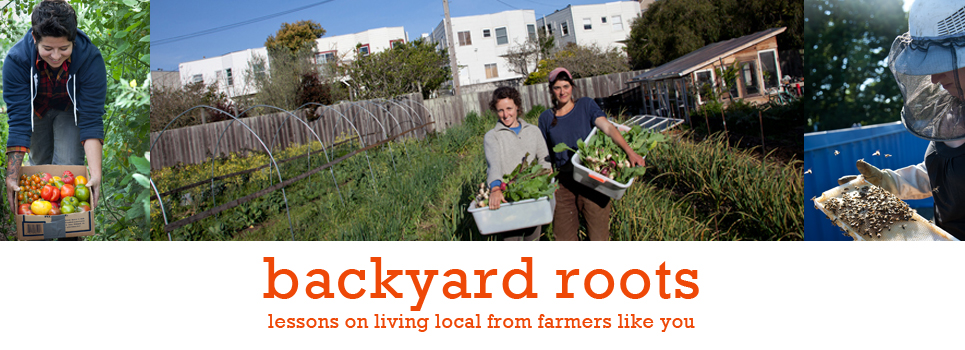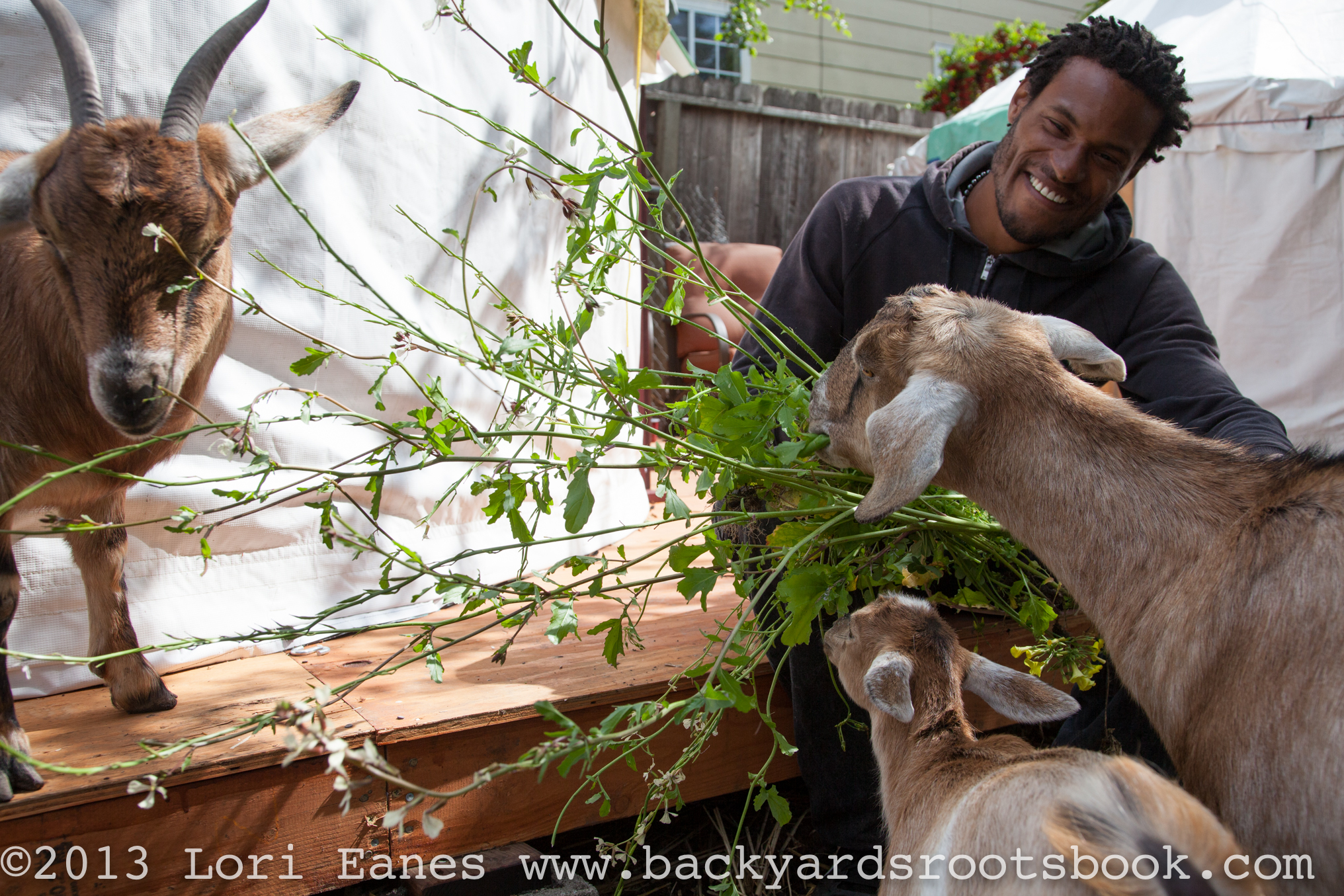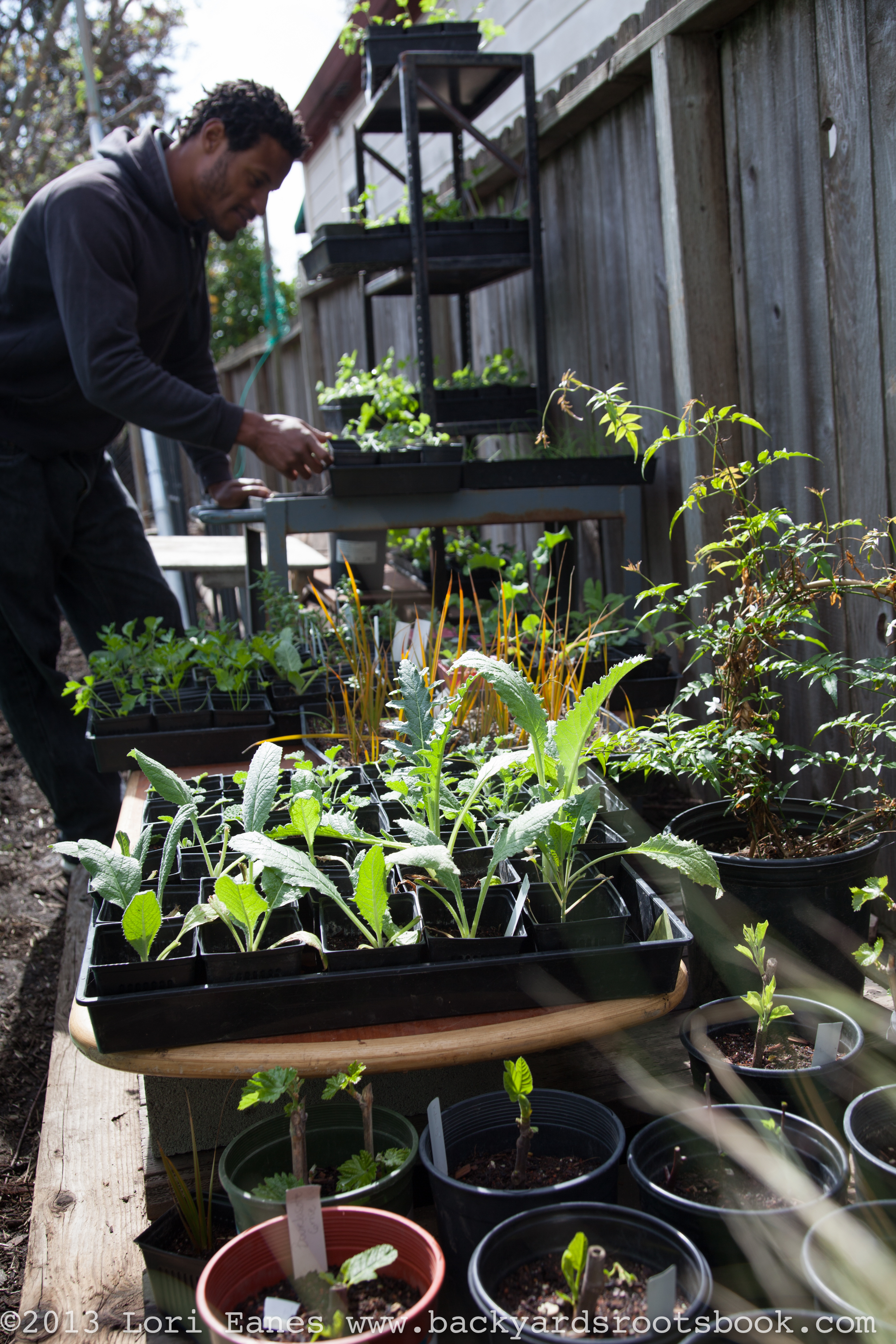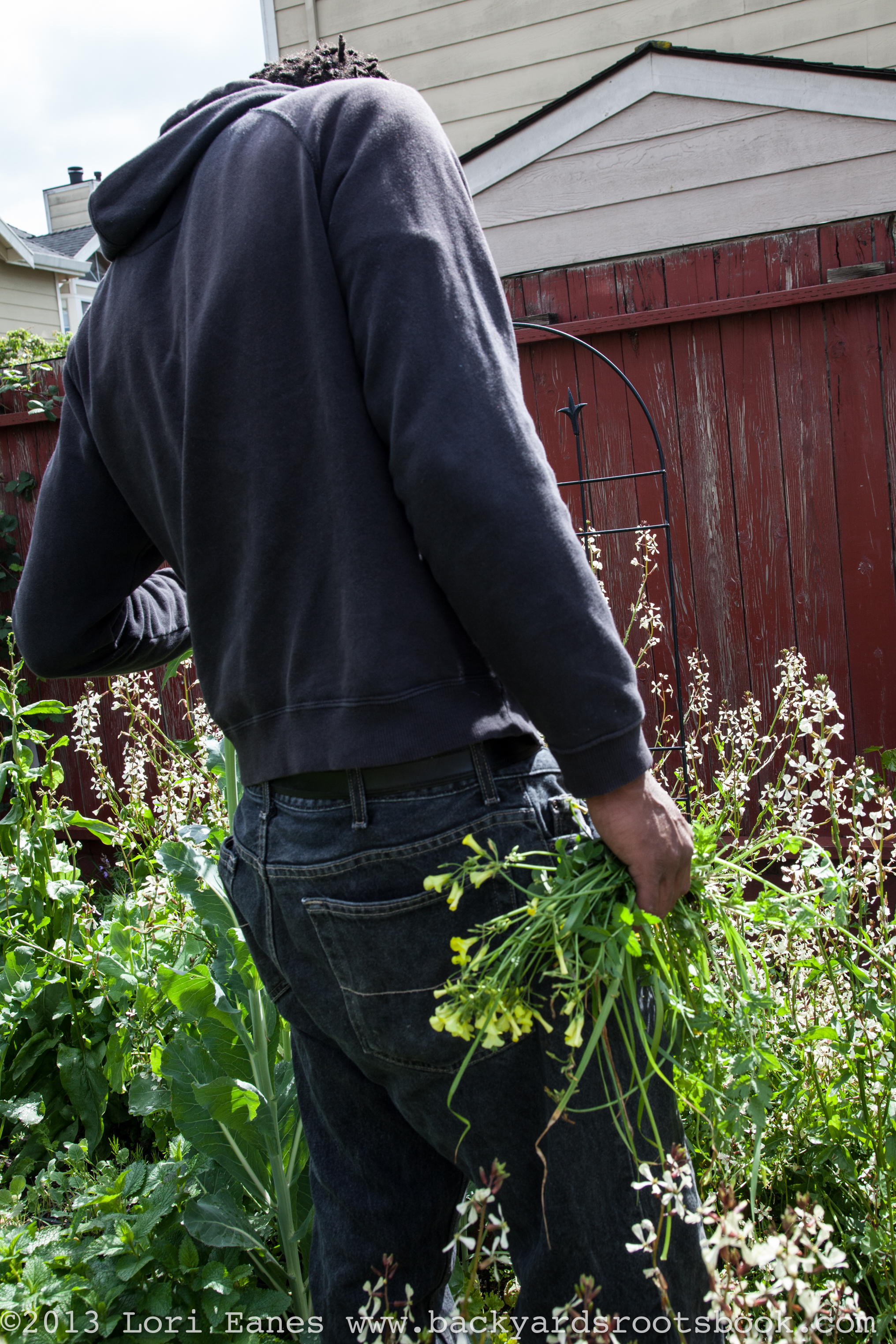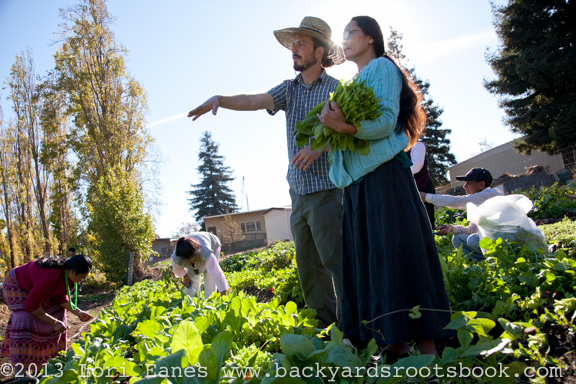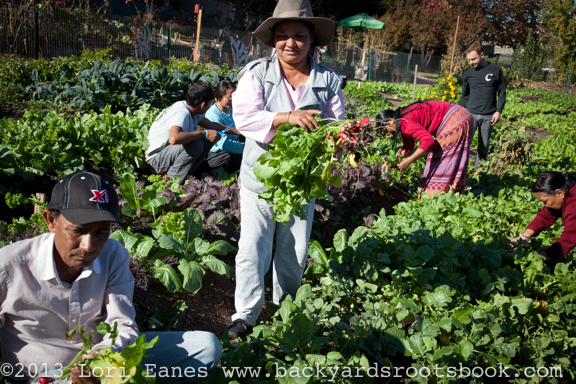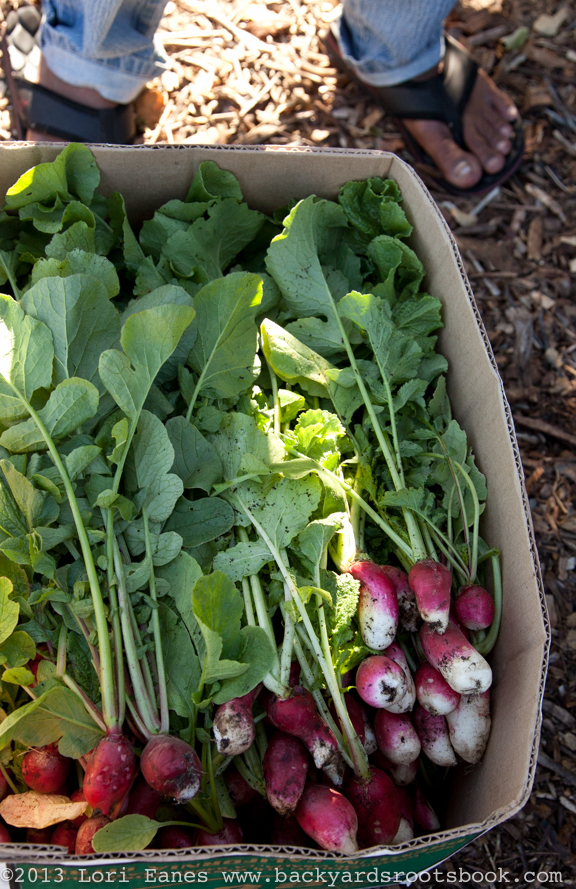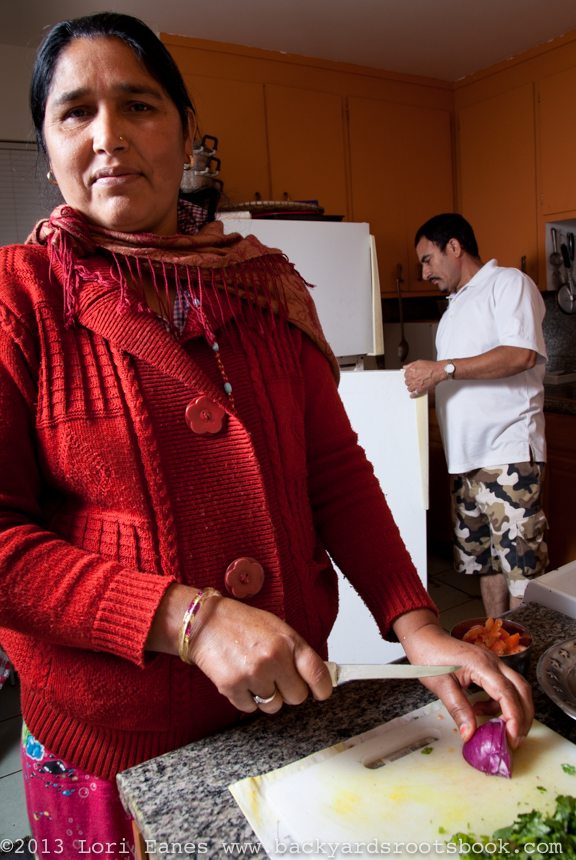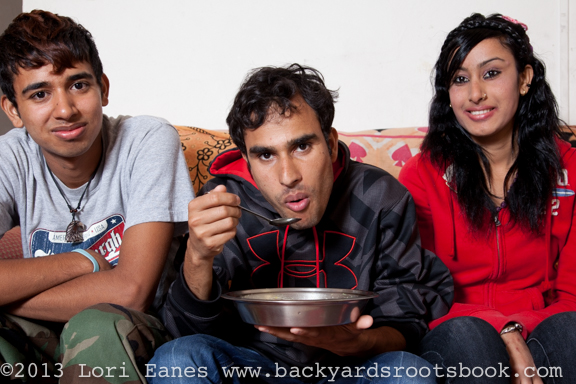Last week I visited Full Harvest urban farm in Oakland. Region Lewis showed me around and the potential is amazing. It’s a giant space for an urban farm –close to 1/2 an acre and includes two backyard lots in the Laurel district of Oakland. And it’s not only a farm, it’s a retreat with yurts, a meeting space, solar panels, not to mention 23 chickens, 8 ducks, 3 goats, and a pig. The pig is a pot bellied rescue that is there for educational purposes. The animals all have free range, some of the chickens even prefer to roost in the trees at night. Visit Full Harvest farm June 7th on the Institute of Urban Homesteading Tour this year. Many thanks to Yolanda at Pollinate for the connection.
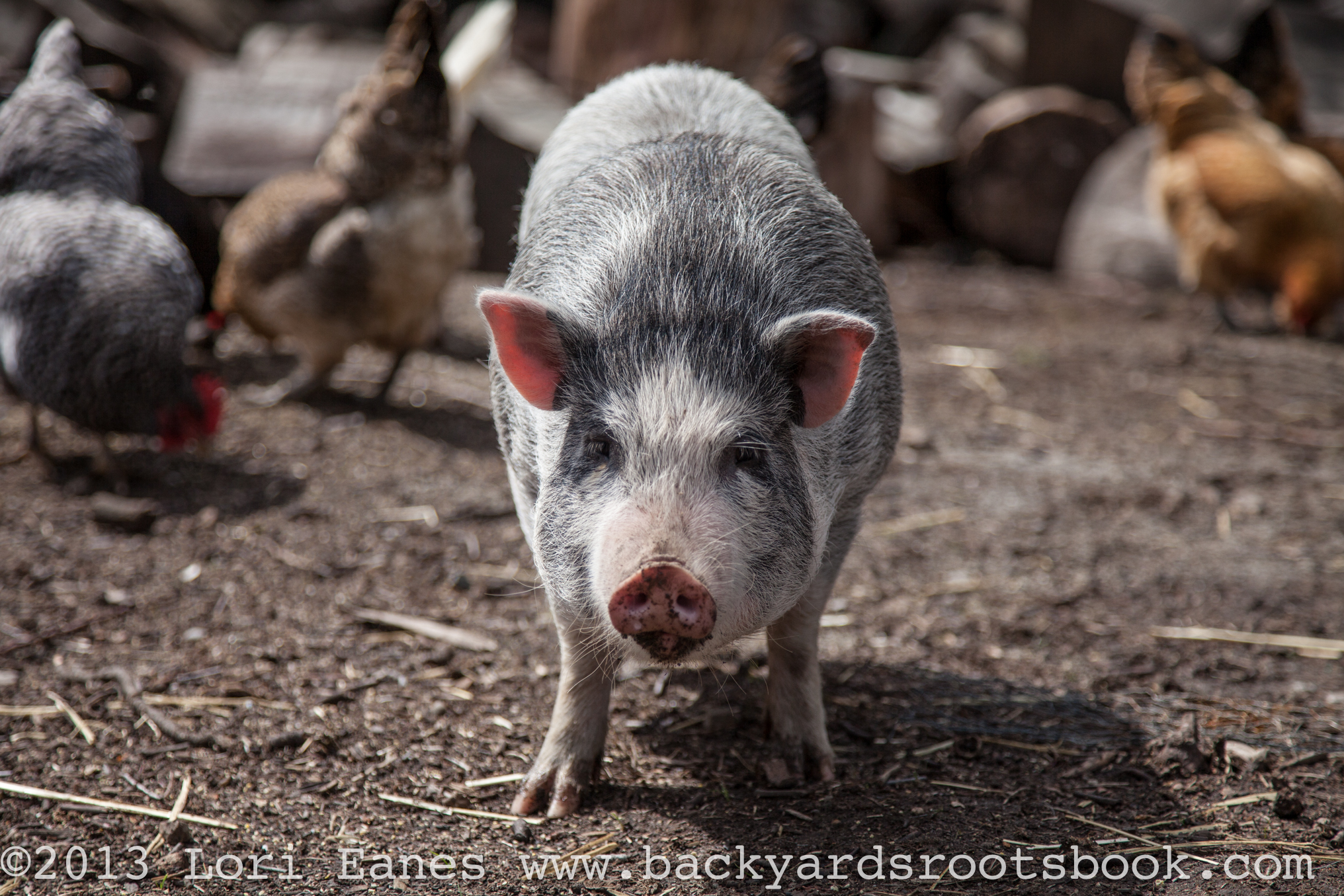
The pot-bellied pig is kept for educational purposes. He’s known to eat anything and everything and is highly intelligent. Region says having the pig is a good argument for vegetarianism.
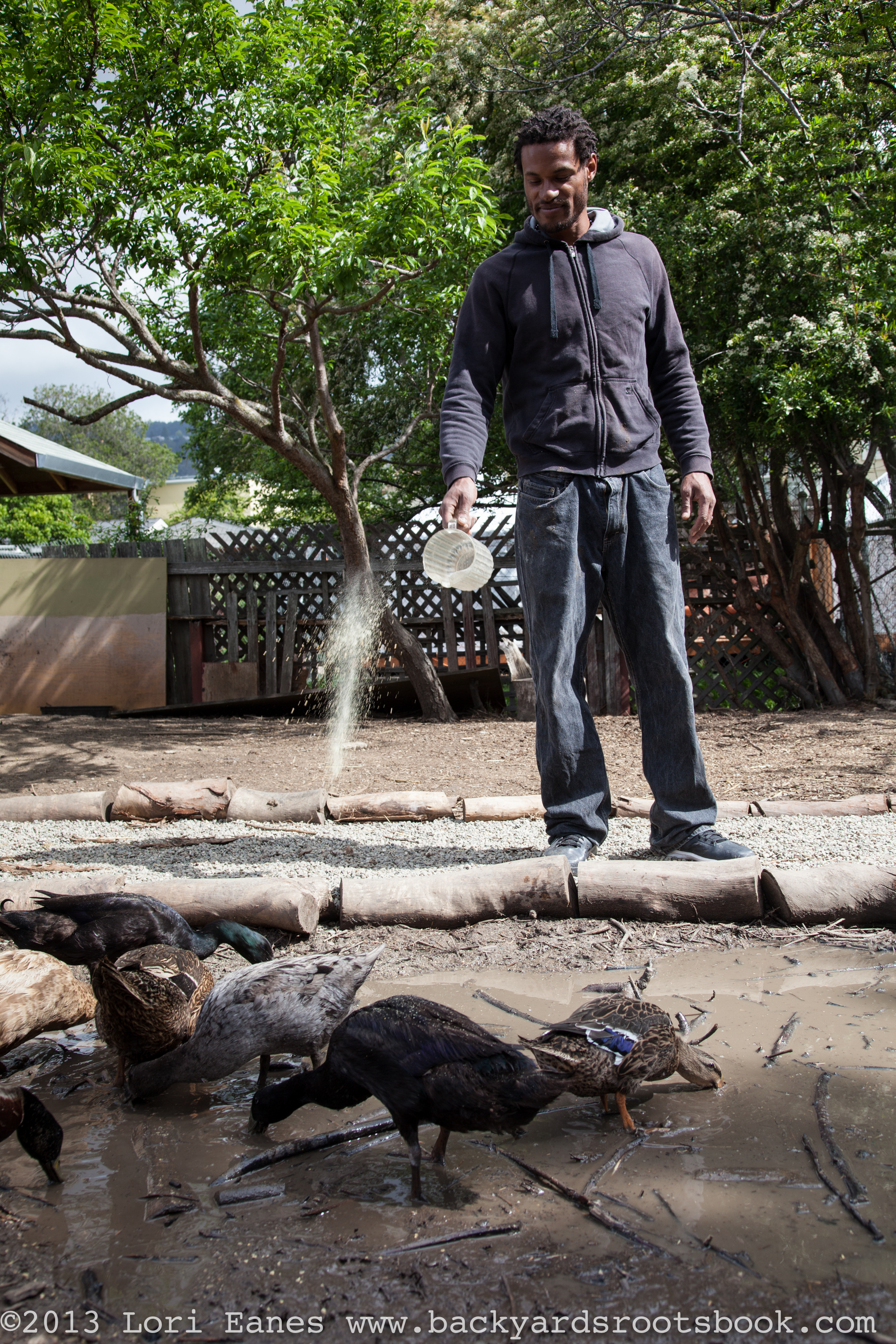
Region’s tip for feeding ducks (when you also have chickens) is to throw the duck feed in the water. Ducks like their food wet and it will be safe from the chickens.

Full Harvest Farm has just set up solar panels. Region said they got help from the Green Panthers and he said the entire system was very simple and cost around $2k. The panels are connected to a marine battery system that fits into an expandable tool box.
